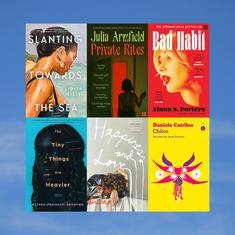Baba Ramdev has perhaps never heard of billionaire businessman Richard Branson. And vice versa. But there are fascinating similarities between them, and their respective businesses.
Richard Branson is, of course, admired by marketing professionals for the Virgin brand he has created – often listed among the world’s great brand success stories. Starting as a tiny music label, Virgin has gone on to become a highly innovative “Challenger Brand”, unnerving dominant brand leaders in various categories, from British Airways to Coke and Pepsi.
What is remarkable about Virgin is the way it successfully overturned one of the fundamental precepts of marketing – that a brand can succeed only in a narrowly defined space (and the narrower the better). For example, Colgate has a compelling brand equity in the toothpaste space. And Ponds has a compelling brand equity in the skincare space. But you couldn’t have a Colgate moisturizing cream. Or a Ponds toothpaste. It just does not work that way in the consumer’s mind (Ponds actually did try to launch a toothpaste once, but it failed miserably.)
Virgin, however, managed to create a brand equity that was uniquely elastic, based on the core values of consumer empathy and cheeky irreverence. And it thus managed to enter – and disrupt – an unprecedented variety of categories, from finance to cellular services, from travel to healthcare. The key driver of this uniquely elastic Virgin brand, uniting its diverse product stories, was the flamboyant, maverick personality of Richard Branson, and his knack for generating enormous amounts of publicity for himself and his causes.
As a result of what it has managed to achieve, the Virgin case study is a regular fixture wherever brands are discussed – along with other leading-edge brands like Apple, Airbnb, Uber and Red Bull.
But now it looks like Baba Ramdev has, entirely independently, discovered Richard Branson’s route, and out-Virgined Virgin, across a mind-boggling range of 500 product lines, from toothpastes to noodles, from home cleaners to candy bars.
It won’t be long, perhaps, before marketing professionals all over the world are studying how Baba Ramdev and Patanjali managed to upset the apple carts of multi-national giants like Colgate-Palmolive, Nestle, Hindustan Unilever and Procter & Gamble (not to mention other leading players like Dabur, Marico, Britannia and Emami).

A factor of 10X
To put Patanjali’s feat in perspective, consider this: just a couple of years ago, ITC’s fast-moving consumer goods business was being saluted by marketing pundits for having the nerve to take on Hindustan Unilever, P&G, Britannia, Pepsico and Nestle, all simultaneously, by diversifying into their home territories, and fighting successfully on multiple fronts, including toiletries, biscuits, snack foods and juices. But while ITC (with all its resources) grew its FMCG business by a factor of 9X over the past ten years, Patanjali grew by a factor of over 10X in the past four years alone. And in the current year, while the other FMCG giants are limping along in the single digits, Patajali expects its business to grow by another eye-popping 2.5X.
In fact, Patanjali has been so successful that it is not just the marketing fraternity that is sitting up and taking notice, but the hard-headed global banks, brokerages and venture capitalists as well. HSBC, for example, went to the extent of issuing a special 43-page report on Patanjali’s impact on the FMCG category. Titled “A Disruptive Force in the Indian Consumer Sector”, the report assessed Patanjali’s specific threats to various blue-chip companies and, significantly, cut their share price targets as a result of the Patanjali Factor.
Now that’s when you know that it is hitting the competition where it hurts.
How the heck?
So now the question is, how the heck has Patanjali done it? The short answer: by doing a desi version of Richard Branson – but even more so.
First, on the purely functional level, Patanjali offers a range of products (based purportedly on Ayurvedic formulations) at prices that are typically 15% to 30% lower than their competitors. But this functional benefit is merely the entry ticket, because for FMCG products what is even more important is the emotional benefit that they deliver. And that is where the instinctive canniness of Baba Ramdev kicks in.
Let us flash back for a moment: Back in the early 2000s, Baba Ramdev managed to build a cult personality for himself, nationwide, with his hugely popular yoga programme on Aastha TV. This personality or brand stood strongly for the core values of health, well-being, spirituality, and all things traditionally Indian.
Coincidentally, I remember running a brand workshop around this time, where we played a game of “What if Baba Ramdev was to launch a line of products?” What kind of products could he sell which would be congruent to his personal brand? The suggestions that came up were ayurvedic toiletries, herbal over-the-counter products, chyawanprash, incense sticks and, maybe, specialised media content. In other words, a cross between the lines that Dabur, Himalaya and Deepak Chopra were into. But if somebody had suggested, back then, that Baba Ramdev should launch products like noodles and jeans, they would have been politely told that it would not work: it is incongruent with the rules of branding.
With time, however, Baba Ramdev began to add on powerful new dimensions to his brand equity – like aggressive nationalism, and a crusade against corruption of all kinds, financial as well as moral. These, in short, were the things that his brand stood for.
But, often, what defines a brand even more sharply than what it stands for, is what it stands against. And Baba Ramdev made it clear that he stood vehemently against the multinationals, whom he blamed for a variety of supposed national ills, from “financial slavery” to “live-in relationships” and “homosexuality”. All this, backed by the credibility of the Baba’s personality, evidently struck an emotional chord with a broad swathe of Indian consumers. Somewhere along the line, the Baba quietly set up a little Ayurvedic business with his friend Acharya Balakrishna (who later remarked that before he set up the company, he did not even have a bank account). Nobody could have foretold, back then, the kind of seismic impact this company would have on the Indian marketplace.

Flashing on radar screens
It was around 2012, perhaps, that Patanjali first began to flash on the radar screens of the FMCG companies. Before long, its Dant Kanti toothpaste, built on the strength of Baba Ramdev’s brand appeal, was aggressively stealing market share from brands like Colgate, and its Kesh Kanti shampoo was making inroads into the shares of brands like Dabur and Sunsilk. Patanjali became a formidable threat because its products offered the consumer very compelling functional benefits that the other FMCG majors were unable to match.
Yet, this was only one part of the appeal of the Patanjali brand, because its functional benefits were supplemented by a set of emotional benefits that were, arguably, even more compelling – and the entire package was presented to the consumer wrapped up with the charismatic brand personality of Baba Ramdev. It was an extremely potent brand model (even deeper – and more elastic – than Richard Branson’s own very successful brand model).
In the past couple of years, of course, there has been a bewildering stream of products being offered to the consumer under this Baba Ramdev/Patanjali master-brand – ketchups, choco-flakes, skin-care products, shaving gels, detergents, atta, fruit juices, Ayurvedic remedies, ghee, you name it – and, what’s more, they have been flying off the shelves without much advertising.
After all, why would you need to advertise, when all Baba Ramdev had to do was to present one of his products during his TV programme and personally demonstrate its virtues to millions of his loyal acolytes?
All this turned the world of marketing upside down, and the MNC giants just did not know how to respond. It was what is known in business as an “UNK UNK” – an “Unknown Unknown” (as contrasted with a “Known Unknown”, which you know might be coming around the corner, and can therefore prepare a strategy against). And because of the sheer range of products Patanjali was offering, none of the MNC players were left unaffected – although, ironically, some of the players that were worst hit were Indian companies like Dabur, who were in Patanjali’s direct line of fire.
What happens next?
So where does Brand Patanjali go from here?
The company claims that by 2020 it will hit a turnover of Rs 20,000 crore and, by 2025, Rs 100,000 crore (compare this with Hindustan Unilever which, having been a leader in the Indian market for the past eight decades, has now touched a turnover of Rs 34,000 crore.)
But the FMCG biggies are now working to get their act together, and we should see some interesting developments in the Indian consumer space over the next couple of years.
The latest report is that Baba Ramdev is opening up a whole new marketing front, and getting into the jeans business, thus going up against Levi’s and Wrangler (not to mention Spykar, Flying Machine, etc.). Whether he will succeed is currently a matter of debate among marketing professionals, who believe that even for a brand as elastic and powerful as Patanjali, this is too much of a brand-stretch. But, given the company’s past track record, you never know.
Meanwhile, here are six product lines that you shouldn’t be too surprised to see emanating out of the Baba Ramdev brand in the not-too-distant future (provided, of course, Patanjali can find the necessary management bandwidth, which is another matter of debate):
- Milk, milk products and ice-creams – competing with players like Nestle, Kwality Walls, Danone, Britannia, etc.
- Bottled water – competing with players like Coke, Pepsi, Parle, etc.
- Seeds and farm products – competing with the MNCs and other corporate players.
- Cement – competing with various corporate players in a category where there seems to be a deficit of trust.
- Consumer durables and cellphones - competing with with players like Samsung, LG, Philips and the Chinese brands.
- Media, entertainment and publishing – An Indian version of Disney that offers wholesome family entertainment with Indian values? A news channel? Multimedia content publishing? Who can say?
With Baba Ramdev, at this point, anything seems possible.










